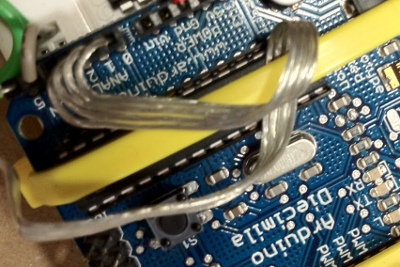
We recently told you about Project Black Mirror, a seemingly-ambitious attempt to control the iPhone’s Siri technology with only mind waves. When we watched the original video of the project demonstration, we all — including the rest of the internet — got excited about the possibility of futuristic mind control.
It appears that the “hackers” behind Project Black Mirror were only controlling all of our minds, not Siri’s. Several sites are now reporting that the project is fake…
The video demonstration shows a hacker thinking about who he wants to call, and then the command is fed through a complex setup of a Arduino board and MacBook Pro. The people behind the project used the video to jumpstart a KickStarter project and request donations to get the technology distributed to the public. The video has been viewed over 160,000 times since its release.
[tube]http://www.youtube.com/watch?v=xFIRmnRHNUM[/tube]
For the less scientifically inclined (admittedly, we at iDB included), the fancy wires and hardware used in the video demonstration seems to prove that Siri is really being controlled by brain waves that are converted to audio commands. Those with a knowledge of the science and technology have pointed out that demo was easily faked.
Greg Courville, an undergraduate physics student at the University of California, has pointed out several problems with the video posted by Project Black Mirror:
If you haven’t spotted it already: not only does there appear to be virtually nothing connected to the SpeakJet chip, it’s also placed sideways in the breadboard, which shorts a number of critical pins together, and therefore would make it impossible to use.
The project’s blog claims that “ECG pads provide raw skin conductivity / electrical activity as analogue data (0-5v)”. Let’s go ahead and ignore the fact that they seem to have confused EEG with ECG (which is a completely different type of measurement), and the spurious reference to “skin conductivity” (ditto). The most glaring problem with that statement is the claim that EEG signals fall in an Arduino-friendly 0-5V positive voltage range. Suffice it to say they don’t.
What did Project Black Mirror do? Based on their written statements, their YouTube videos and the photo shown below, they connected the electrode leads directly to the analog input terminals on the Arduino.
In short, there’s not even the slightest chance that they are actually recording EEG signals this way.
What is perhaps most telling about Project Black Mirror’s intentions is that the people behind the project take absolutely no time to explain why they need funding, or what exactly the funding will be used for. Not only do the men not state their last names, but they give no explanation of how they intend to distribute the technology.
It’s a fake. We wish it wasn’t fake. Moving along now.
